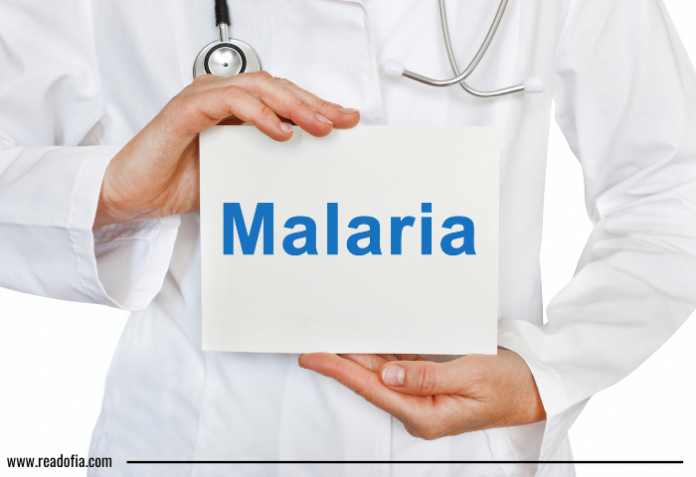What is Malaria?
Malaria is an infectious disease that spreads from mosquitoes to humans. This terrific disease is caused by Plasmodium Parasites. The severity of the disease varies on the basis of plasmodium species. Malaria was highly found in the tropical and subtropical regions, because its climatic condition is suitable for parasites to live. It is preventable and curable disease.
How can it infect the human?
When infected female Anopheles mosquitoes bite the humans, it input parasite into the human body. Then it reaches the liver and starts to mature and reproduce. The matured parasites start to infect the red blood cells which are the important oxygen carriers in human body. These parasites go inside the cell, then it lay eggs and multiply until the cell bursts. After cell bursting, multiple parasites again attack the remaining red blood cells. This cycle continuous for a week and later it starts to show symptoms. By the microscopic examination of blood, this harmful disease was diagnosed.
Malaria is a non contagious disease it does not spread from human to human because it spread only due to mosquito bite. The incubation period of Plasmodium falciparum is 10-14 days. For Plasmodium vivax and other parasites the incubation period is 10 to 17 days.
Types of Parasites:
There are five types of plasmodium parasites that can infect humans. In it Plasmodium falciparum is a terrific parasite and it caused large rates of malaria deaths. Other P.vivax, P.ovale, P.knowlesi and P.malariae parasites cause malaria at low rates.
Plasmodium falciparum mostly found in tropical and sub tropical areas. Plasmodium vivax was found in Asia and Latin America. Plasmodium ovale found in Africa and Pacific islands. Plasmodium malariae found worldwide. Plasmodium knowlesi are the species highly found in Southeast Asia.
Transmission:
The female Anopheles mosquitoes are the main transmitters of malaria disease. There are more than 400 Anopheles species, among them 30 act as malaria vectors. Each species has its own aquatic habitat. Rainy season is the preferred climatic condition for mosquitoes, because it can found water anywhere. The Anopheles mosquito lays eggs in water and it need blood food for egg growth. These eggs hatch into larvae and then fastly turned into adult mosquito.
The speed of transmission depends on three factors they are
A Parasite type
In an area where the mosquito life span is long and strong human biting habit, transmission rate is very fast.
Environmental condition
The climatic conditions also sometimes become favorable for transmission. Malaria became a seasonal disease mostly after the rainy season.
Human Immunity
When human with low immunity power moved to high malaria spread area, the chance of transmission is high.
Another way of transmission occurs sometimes due to mistakes. Malaria cannot spread from one person to another but there is high chance of transmission by blood. It occurs sometime during
- Organ transplantation
- Blood transfusion
- Pregnant women to babies
- Used needles & syringes
Symptoms of Malaria :
After 10-15 days from mosquito bite, symptoms usually occur. Early stages of symptoms are
- Fever and chills
- Headache
- Tiredness
- Vomiting
If treatment is not properly taken, it becomes severe. In severe cases the symptoms are anemia, seizures, yellow skin, kidney failure, low blood sugar, coma and finally death will occur.
How to Prevent from Malaria :
To prevent and reduce malaria transmission, first we have to stop mosquito entry into house, offices, schools and public places. Some points below are the preventive measures should be taken by every human to escape from mosquito bite.
- Using mosquito net
- Using Mosquito repellant
- Spraying insecticides
- Draining of stagnant water
Antimalarial Medications:
Some medicines are recommended for travelers, pregnant women’s and infants to prevent malaria in high transmission area. Chemoprophylaxis recommended for travelers and Sulfadoxine-pyrimethamine prescribed for both pregnant women’s and infants.
Some other medicines used for malaria treatment are mefloquine, lumefantrine, quinine, doxycycline, chloroquine and primaquine. The only vaccine available to prevent malaria is RTS, S, it requires four injections and its performance is very low. Due to its low performance, WHO not permitted to use this vaccine for babies of 6 to 12 weeks.
Diagnosis of Malaria:
For malaria caused by Plasmodium falciparum, the best treatment is Artemisinin based combination therapy (ACT). Malaria diagnosis can be done either by microscopy or rapid diagnostic test. While seeing the blood of the infected persons through microscope, the parasites can be identified easily. Only this type of diagnosis test is available in many places and countries. Rapid diagnostic tests give immediate results.
Highly Affected Countries:
Even after the US eradicated malaria, it seen more than 1700 malaria cases every year due to immigrants and travelers from countries of high malaria infection. From the year 2015 to 2018, more than 200 million malaria cases occurred worldwide. Children below age 5 are highly affected by this disease.
Worldwide, malaria sufferers were the most prevalent during the year 2018. Through worldwide there were 228 million malaria cases and death was estimated about 405,000. Moreover, the African WHO region suffered excessive vulnerability. It faced 93% of malaria cases and 94% of malaria deaths. Two main reasons for high malaria cases in Africa are the African vector species long life span and strong human biting habit.
In 2018, the malaria cases due to Plasmodium falciparum are
- 99.7% in WHO African region
- 50% in South East Asia region
- 71% in Eastern Mediterranean region
- 65% in Western Pacific region
On the other hand, Plasmodium vivax represents 70% of malaria cases in WHO American region. On 2018, more than half of malaria cases in worldwide found in six countries. They are Nigeria (25%), the Democratic Republic of the Congo (12%), Uganda (5%), Côte d’Ivoire (4%), Mozambique (4%) and Niger (4%). On 2018, the funding for malaria control estimation reached US $2.7 billion.

